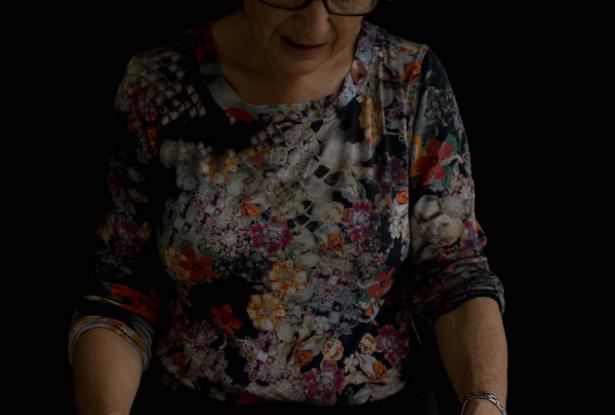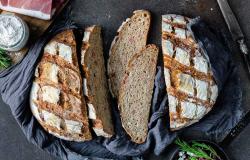Grissini stirati (Hand-pulled breadsticks)

Italians are fond of narrating a variety of stories surrounding foods and recipes from their country. There's the one about Marco Polo discovering pasta at Kublai Khan’s court in China and bringing it back to Europe. Many Tuscans (it's best not to argue with them otherwise!) are convinced that it was Catherine de Medici who revolutionised French cuisine by bringing over, amongst many other things, forks, artichokes and sorbets to her adopted country in the 1500s. And, would you believe, one of Italy's most-beloved desserts, tiramisù, was invented as a ‘pick me up’ for courtesans in the 17th century?!
Obviously, these myths rarely stand up to closer scrutiny by historians. Gillian Riley, author of the encyclopedic (and myth-debunking) The Oxford Companion to Italian Food, concedes though that these endearing anecdotes bring a human touch to the plain facts. Indeed, legends like these demonstrate how much Italians care about ingredients and cooking.
My adopted city, Turin, is home to a particularly touching yarn about the invention of breadsticks, or, as they called in Italian, grissini. The story goes that the young Duke of Savoy, Vittorio Amedeo, had been frail and sickly since birth. Unable to digest most foods, in 1675, his mother asked the court doctor, Teobaldo Pecchio, for assistance in curing her son. Pecchio diagnosed the Duke with food poisoning as a result of eating bread harbouring pathogenic germs. Pecchio subsequently commissioned Antonio Brunero, a local baker, to produce a crisp and crumb-less ghërsa (Turin's bread of the time) to ensure all potential germs were killed. Vittorio Amedeo was fed Brunero’s ghërsin (literally, ‘little ghërsa’), cured of his childhood maladies and went on to reign as Vittorio Amedeo II, Duke of Savoy and King of Sicily and Sardinia until 1730. The grissino (the Italianised word for the Piedmontese ghërsin) was born!
Here is a more realistic appraisal of this 'creation myth'. The botanist and naturalist Costanzo Felici's writings in the 1560s suggest that a variety of crumb-less bread similar to Brunero's ghërsin existed before its 'invention' well over a century later in the portico-lined Savoy capital. Most likely, the baker Brunero made a special, crisper version of this already known bread for the ailing duke.
Embellished history notwithstanding, no one would dispute that Turin and the surrounding region's bakeries are home to a dizzying variety of high-quality, handmade grissini. Here you will find artisan grissini al sesamo (breadsticks with sesame seeds), al papavero (with poppy seeds), alle olive (with olives), to name a few. The pre-packaged, commercial ones produced elsewhere, quite frankly, pale in comparison.
A few notes on the following recipe. It is for grissini stirati or 'hand-pulled' breadsticks. The yeasted dough, after being left to rise, is flattened into a rectangle and cut into strips which are then pulled at each end to make long, thin breadsticks. Over the years, ingenious local bakers have resorted to this method whenever rolling out individual grissini (grissini stirati's rustic, hand-rolled cousins are called rubatà in Piedmont) has proved to be too time-consuming.
Many recipes also call for the addition of fat, namely lard or olive oil, to the dough, plus extra for coating. Whenever I buy grissini though, I generally opt for those made all'acqua (with water only), simply because I find myself munching on so many in one sitting! Grissini may be more digestible than regular breads, but beware, they are more calorific! For this reason, my recipe is fat-free. If you want richer grissini though, feel free to replace a small part of the indicated water content with olive oil or lard. As for coating the breadsticks, instead of rolling them in coarse, durum wheat flour (semolina), you may wish to add a gourmet touch and sprinkle them with tasty condiments like poppy, sesame or fennel seeds instead.
(makes about 20 grissini)


Pour tepid water in a large mixing bowl and add yeast and malt. Stir and leave to sit until the yeast dissolves and foam rises to the surface (about 10 minutes). Add flour and mix until the ingredients come together as a dough. Cover and leave to sit for 10 minutes. Transfer dough to clean and lightly-dusted work surface. Add salt and knead until dough is smooth and elastic (about 10 minutes). Roll into a ball, score the dough with a cross on top and place in a large, clean bowl. Cover and leave to rise until doubled in size (about 1 – 2 hours).
Preheat oven to 200 ° and line oven trays with baking paper. Deflate dough carefully. Using a rolling pin, flatten dough into a rectangular loaf about 30 cm in length and no more than 10 cm wide on a well-dusted work surface. Cut rectangle into 1 cm wide strips. Leave strips to rest for 10 minutes.
Take a strip of dough and gently pull each end until stretched to the desired length (the length or width of your baking tray, for example). Brush grissino with water and then gently roll in a wide shallow tray containing durum wheat flour. Transfer grissino to lined baking tray. Repeat procedure with the remaining dough strips.
Bake until grissini are crisp, golden and when their characteristic 'club feet' have begun to stick up slightly (about 15-20 minutes for thinner grissini, 20-25 minutes for thicker grissini). Remove from oven and allow to cool completely on a baking rack.
Serve as part of an appetiser (they are particularly tasty with a slice of prosciutto crudo or cured fatback wrapped around them!) or as alternative to regular bread at meal time. Buon appetito!






